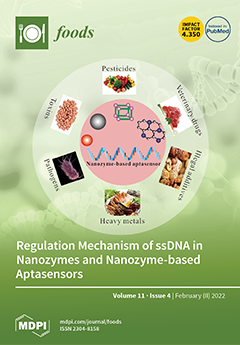Respiration metabolism could improve the long-term survival of lactic acid bacteria (LAB); however, its effect on potential probiotic traits of LAB was not reported. The difference made by
Enterococcus faecalis LD33 that was cultured under respiration-permissive and fermentation conditions, such as the biomass,
[...] Read more.
Respiration metabolism could improve the long-term survival of lactic acid bacteria (LAB); however, its effect on potential probiotic traits of LAB was not reported. The difference made by
Enterococcus faecalis LD33 that was cultured under respiration-permissive and fermentation conditions, such as the biomass, metabolites, antimicrobial activity, tolerance to acid and bile salt, adhesion capabilities, and the ability to inhibit the proliferation of cancer cells were studied. Under a respiration-permissive condition, the final biomass of the culture was about twice as compared to that of fermentation condition. When the metabolites were measured, glucose was exhausted within 8 h. Two-folds of acetic acid, triple of both acetoin and diacetyl, and less than half of lactic acid, were accumulated under the respiratory-permissive condition. No discrimination of growth inhibition on
Salmonella enterica serovar Typhimurium ATCC 14028 and
Shigella sonnei ATCC 25931 was observed when
Enterococcus faecalis LD33 was cultured under both conditions; however, under respiration-permissive condition, the strain presented significant antimicrobial activities to
Listeria monocytogenes ATCC19111 and
Staphylococcus aureus ATCC6538P.
Enterococcus faecalis LD33 displayed relatively strong bile salt tolerance and adherence capability but weaker acid tolerance when undergoing respiration metabolism. There was no significant difference in the anti-cancer effect of the viable bacterial cells on both growth modes; however, the supernatant showed a higher inhibition effect on HT-29 cells than the live bacteria, and there was no significant difference between the supernatant and the 5-Fluorouracil (7 μg/mL). Consequently, the
Enterococcus faecalis LD33 undergoing respiration metabolism could bring higher biomass, more flavor metabolites, and better antimicrobial and anti-cancer activities. This study extends our knowledge of respiratory metabolism in LAB and its impact on probiotic traits.
E. faecalis LD33 qualifies as a suitable strain against foodborne pathogens, cancer therapy, and eventual application in the food and pharmaceutical industries.
Full article






